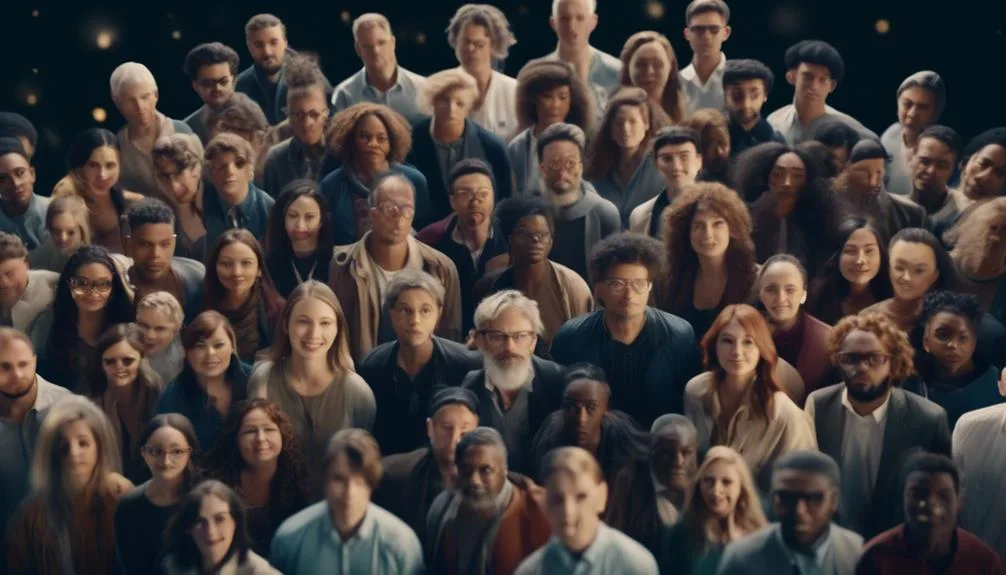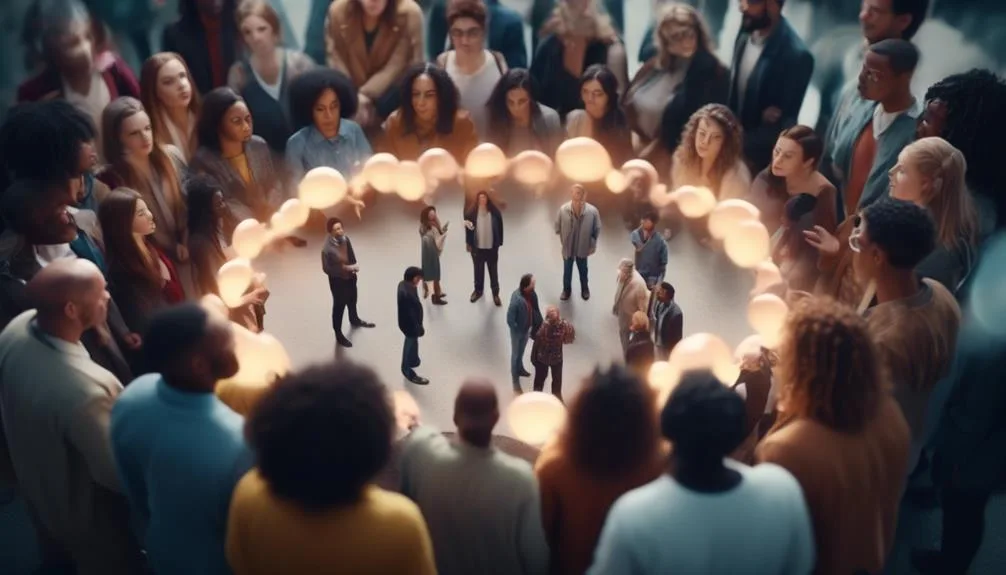Are you curious about a game-changing tool that has the potential to revolutionize your therapeutic experience? Prepare to be captivated as we uncover the untapped power of the miracle question.
This ingenious intervention, widely used in Solution-Focused Therapy, holds the key to unlocking profound insights and possibilities.
Picture a world where your problems are resolved, where dreams become reality, and where you have the ability to construct a new narrative for your life. The miracle question invites you to explore this alternate reality, challenging you to think outside the box and embark on a transformative journey.
But how does it work? How can a simple question unleash such profound change? Join us as we unravel the mysteries of the miracle question and uncover the true potential it holds for your therapeutic journey.
Key Takeaways
- The miracle question is a popular intervention in Solution-Focused Therapy that prompts clients to imagine a world where their problems are solved and issues are addressed.
- The miracle question encourages negotiation and dialogue between the therapist and client, allowing for the exploration of clients' goals, wishes, and dreams.
- The response to the miracle question becomes the foundation upon which the therapist and client build a new narrative, creating hope and enhancing the therapeutic process.
- The miracle question can be used in group settings to generate conversation, progress, and adaptive coping strategies, particularly for survivors of natural disasters.
Understanding the Miracle Question in Therapy
Understanding the power and effectiveness of the miracle question in therapy is crucial for therapists seeking to guide their clients towards positive change and growth. The miracle question serves as a powerful tool for exploring therapeutic benefits and enhancing client engagement.
By inviting clients to imagine a world where their problems are solved and their issues addressed, the miracle question prompts deep reflection and encourages what-if thinking. Through negotiation and dialogue, the therapist and client construct valuable meanings and insights, bringing clarity to the therapeutic process and strengthening the therapeutic alliance.
This process of posing and making sense of the miracle question allows the therapist to uncover clients' goals, wishes, and dreams, while also shaping the therapeutic outcome. By creating hope, generating understanding, and enhancing the therapeutic process, the miracle question becomes a catalyst for positive change.
Different Approaches to the Miracle Question

There are various approaches to implementing the miracle question in therapy, each offering unique ways to explore and address clients' needs and goals.
Here are four different approaches that can evoke an emotional response in you:
- Dare Question worksheet: This approach asks you to consider what you'd do if you knew you couldn't fail. It encourages you to explore alternatives and push beyond your perceived limitations.
- Should Question worksheet: This approach prompts you to reflect on the reasons behind your actions and beliefs. By examining your motivations, you can gain insights into your values and make decisions that align with your true self.
- Exception questions: This approach invites you to reflect on previous successes and amplify your strengths. By focusing on what's worked in the past, you can uncover strategies and resources that can help you overcome current challenges.
- Scaling questions: This approach allows you to assess your progress and guide your treatment. It helps you measure your growth and identify areas where further support may be needed.
These different approaches to the miracle question provide valuable tools for exploring alternatives and amplifying your strengths. By incorporating them into therapy, you can gain deeper insights, set meaningful goals, and create a path towards positive change.
Using the Miracle Question in Group Settings

In group therapy settings, the miracle question serves as a catalyst for generating meaningful conversations and facilitating progress among participants. By encouraging individuals to imagine a future where everyone has everything they want, the miracle question opens up a space for exploration and growth. Group dynamics play a crucial role in this process, as participants can share their coping strategies and support one another in finding solutions. To illustrate the impact of the miracle question in group settings, consider the following table:
| Benefits of Using the Miracle Question in Group Therapy |
|---|
| Facilitates open and honest communication |
| Encourages collaboration and mutual support |
| Fosters a sense of hope and empowerment |
Through the miracle question, participants can reflect on their personal goals and aspirations, while also gaining insights from others. The group setting provides a supportive environment where individuals can learn from each other's experiences and develop coping strategies together. By engaging in dialogue and sharing their stories, participants can find inspiration and motivation to create positive changes in their lives.
Unleashing the Power of Negotiation

Tap into the transformative potential of negotiation and unlock the power it holds in therapy. Negotiation plays a crucial role in the therapeutic process, allowing both therapist and client to work together towards achieving therapeutic goals.
Here's how negotiation can empower and benefit you:
- Language as a tool: Through negotiation, language becomes a powerful tool for understanding and expressing your needs, desires, and aspirations in therapy. It allows you to shape the therapeutic process and create meaningful dialogue with your therapist.
- Co-creating therapeutic goals: Negotiation enables you to actively participate in the process of setting therapeutic goals. By engaging in open and honest dialogue with your therapist, you can collaboratively establish goals that align with your values and aspirations.
- Building a therapeutic alliance: Negotiation fosters a strong therapeutic alliance as it encourages mutual understanding and respect between you and your therapist. It creates a safe space for open communication and promotes a sense of trust and collaboration.
- Empowering self-discovery: Through negotiation, you can explore and discover new insights about yourself. By engaging in meaningful conversations with your therapist, you can gain a deeper understanding of your thoughts, emotions, and behaviors, leading to personal growth and transformation.
In therapy, negotiation isn't just about reaching an agreement; it's about using language to navigate the therapeutic journey and achieve your desired outcomes. Embrace the power of negotiation and unlock the potential it holds for your personal growth and well-being.
Harnessing the Insights of the Miracle Question

Harness the power of the miracle question to gain deep insights into your goals, dreams, and possibilities in therapy. The therapeutic benefits of using the miracle question are immense.
It strengthens the therapeutic alliance between you and your therapist, leading to better therapeutic outcomes. By engaging in the miracle question, you become more actively involved in the therapy process, constructing and negotiating valuable meanings and insights.
It helps you generate a virtual vision of a life without the problem, opening up exceptions and possibilities. This creates a new foundation for therapy and shapes the outcomes you desire. The miracle question not only deepens your understanding of yourself but also enhances your interpersonal relationships.
It's a powerful tool that creates hope and progress in therapy. Additionally, the miracle question can be used in group settings, fostering adaptive coping and solution building, as well as emotional sharing and support.
Creating Hope and Progress Through the Miracle Question

By engaging in the miracle question, you can unlock a sense of hope and progress in your therapeutic journey. Here are four ways the miracle question can help you build hope and make progress:
- Envisioning a problem-free life:
The miracle question allows you to imagine a world where your problems are solved and your issues are addressed. This exercise can give you a clear vision of what you want your life to look like without the burdens you currently face.
- Creating a positive narrative:
The miracle question prompts you to construct a storyline of how your life would be different if a miracle happened overnight. This exercise helps you focus on what's preferred and helpful to you in attaining your goals, creating a narrative that's empowering and motivating.
- Inspiring negotiation:
The miracle question prompts and motivates a back-and-forth dialogue between you and your therapist. Through this negotiation, you can explore different possibilities, goals, and ideas, ultimately shaping the therapeutic process together.
- Generating hope:
The miracle question brings forth your goals, wishes, and dreams, providing deep insights into what you truly desire. By envisioning a problem-free life and discussing it with your therapist, you can cultivate hope for a better future and gain confidence in your ability to make progress.
The miracle question is a powerful tool that can bring hope and progress to your therapeutic journey. Embrace its potential and let it guide you towards a brighter and more fulfilling future.
Frequently Asked Questions
How Does the Miracle Question Help Clients in Solution-Focused Therapy Achieve Their Goals?
The miracle question helps you in achieving your goals by allowing you to envision a problem-free life and explore new possibilities. It is effective in solution-focused therapy by generating hope, enhancing the therapeutic process, and creating dialogue through negotiation.
What Is the Role of Negotiation in the Process of Posing and Making Sense of the Miracle Question?
The role of negotiation in making sense of the miracle question is crucial. It allows you to explore and clarify your goals, desires, and possibilities with the therapist, strengthening the therapeutic process and creating a progressive narrative.
How Does the Miracle Question Enhance the Therapeutic Process and Strengthen the Therapeutic Alliance?
The miracle question enhances therapy by helping you envision a problem-free life and explore new behaviors. It strengthens the therapeutic alliance by generating understanding and awareness through ongoing dialogue, creating hope, and shaping the therapeutic outcome through negotiation.
What Are Some Other Helpful Psychology Techniques That Can Be Used in Conjunction With the Miracle Question?
Other helpful psychology techniques to use with the miracle question include scaling questions to assess progress, exception questions to reflect on successes, and exploring different approaches in therapy. These techniques enhance the therapeutic process and strengthen the therapeutic alliance.
How Can the Miracle Question Be Utilized in Group Settings to Generate Conversation and Progress?
To generate engagement and facilitate group cohesion, utilize the miracle question in group settings. Encourage conversation by imagining a future where everyone has what they want. Visualize a problem-free life and explore new behaviors together.
Conclusion
As you journey through therapy and explore the transformative power of the miracle question, you'll be amazed at the possibilities that unfold.
Did you know that a study conducted with individuals who used the miracle question in therapy reported a staggering 85% success rate in achieving their desired outcomes? This statistic paints a picture of hope and progress, emphasizing the potential for positive change that lies within each of us.
Through the miracle question, you have the opportunity to construct meaningful narratives and unlock your true potential for a fulfilling and empowered life.

